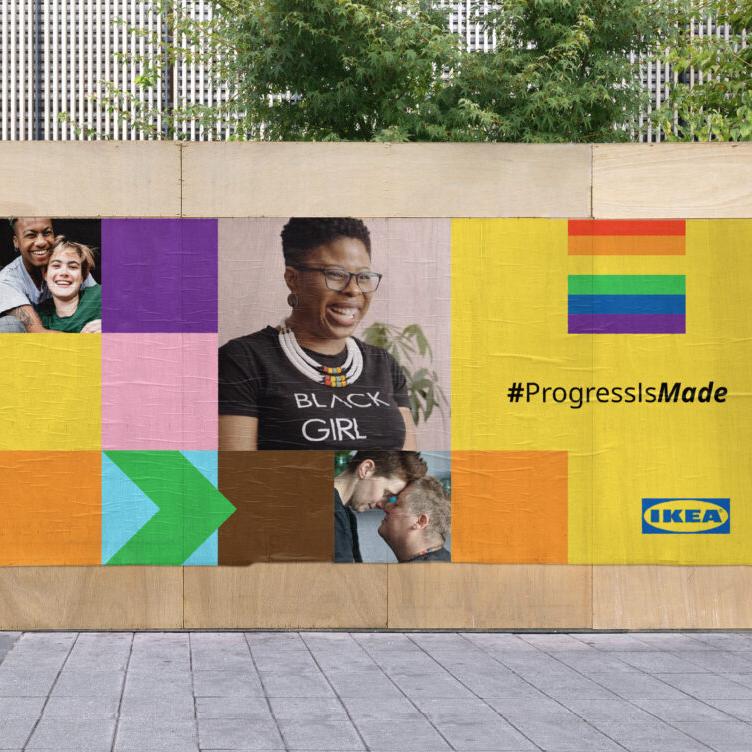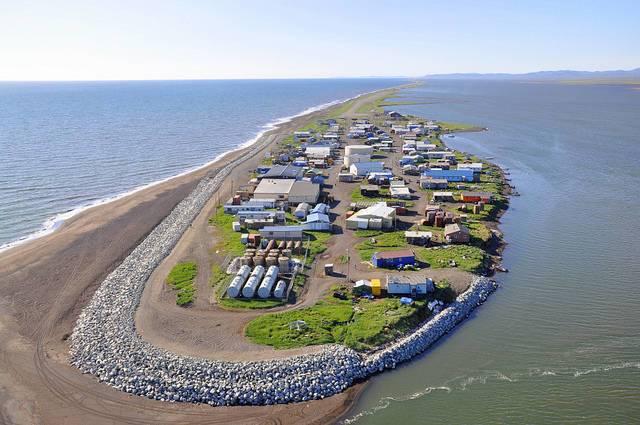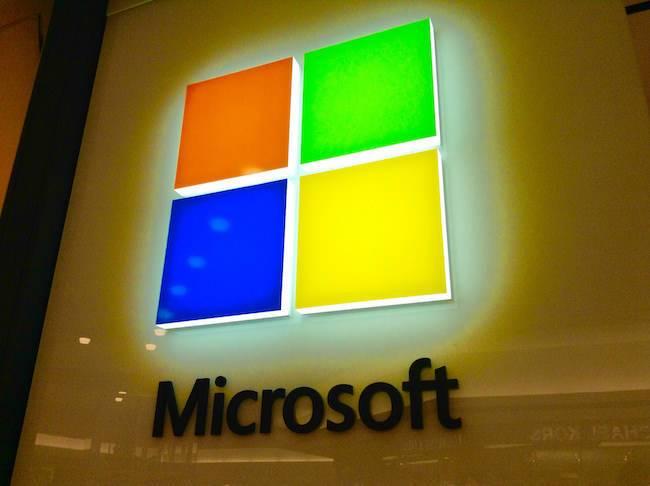Why the Green Climate Fund Matters


By Sheldon Zakreski
The U.S. recently began shifting its global gaze to an inward focus, and climate policy is no exception. From President Trump declaring he represents Pittsburgh and not Paris, to California passing a new carbon law that requires 50 percent of eligible emission reduction projects to occur in the state, our once broad and inclusive views have narrowed considerably. While the sentiment is country-first or state-first, climate change has been, and always will be, a global issue.
This is where the Green Climate Fund (GCF) comes in. The fund was conceived in 2010 and has received over $10 billion in pledges dedicated to support mitigation and adaptation projects in the least developed countries in the world. Such support is crucial because while many of these countries may have a less direct role in negative climate impacts, they also face disproportionately greater risks from climate change. Moreover, these countries face the challenge, unlike developed countries, of trying to raise their living standards by developing their economies in a way that doesn’t substantially increase greenhouse gas emissions.
The GCF is promising in its ability to help on both fronts. Part of its core mission is to support adaptation projects—a review of their adaptation portfolio reveals an emphasis on water, flood management, and soil conservation projects. The mitigation portfolio shows support for projects that develop and facilitate the transition towards clean energy sources. To date, the GCF can boast $2.2 billion in commitments to 43 projects that benefit 125 million people and are anticipated to avoid nearly 1 billion tons of emissions.
Notably, the GCF deploys multiple pathways to funding projects; as of July 24, 2017, GCF disbursed funds through grants, loans, and equity. The use of private capital approaches is key, as it enables projects to leverage GCF funding to attract capital from private sector sources. This is an explicit goal of the GCF, with the program creating a Private Sector Facility that is designed to attract institutional capital to support adaptation and mitigation projects that could also provide a financial return. The goal is to mobilize $100 billion in investments annually to lesser developed country adaptation and mitigation efforts by 2020, with only a fraction coming from government commitments and the majority from the private sector. So far, GCF projects have attracted $2.27 in funding from private sources for every dollar it has committed to projects.
The GCF is still in its infancy, and as such, it faces some marked operational challenges. Notably, the GCF has not been immune to criticism that it has focused on green energy projects in middle income countries at the expense of adaptation projects in the least developed countries. There is also an uneasy balance over the Facility designed to attract private capital at the expense of prioritizing micro and small project finance efforts.
Such challenges and criticisms are natural for any ambitious effort in its initial stages. Despite any obstacles, ongoing support of the GCF is necessary if we are to reach the Paris Agreement goal of limiting the rise of temperatures by 2 degrees, while improving the living standards and resiliency of the poorest and most vulnerable people on the planet.
Image credit: Flickr/UN Women
Sheldon Zakreski is the Director of Asset Management for The Climate Trust
Science-Based Targets Initiative drives practices at Landsec


By Elisabeth Jeffries — When real estate company Landsec realised it could be contributing to a potential global temperature increase of more than 2 degrees C, it restructured its approach to carbon emissions. The shift was driven by the company’s adoption of techniques from the Science-Based Targets Initiative (SBTI), a collaboration between environmental non-profit organisations.
“In 2015, Landsec was reporting on reducing emissions every year. We monitored five buildings that were consuming the most energy and wanted to achieve emissions reductions of 20% by 2020, which we achieved in 2016”, says Caroline Hill, Landsec Head of Sustainability. The new [SBTI] target is more challenging, aiming to cut carbon intensity (carbon dioxide emitted per m²) by 40% by 2030 compared to a 2013/2014 baseline for properties managed since 2015. “Although our target would have altered whether or not SBTI had existed, this was a big change,” she says. As a result of its efforts, however, the company in 2017 became the first in the property sector globally to have its carbon emissions target approved by the SBTI.
Landsec’s approach makes radically different assumptions from previous approaches to reducing emissions in commerce and industry. The SBTI, founded by the CDP, World Resources Institute, World Wide Fund for Nature, UN Global Compact and the We Mean Business coalition, aligns itself with the 2015 UN Paris Agreement on climate change. This was based on climate scientist estimates that minimising the concentration of greenhouse gases in the atmosphere to 450 parts per million of carbon dioxide would limit the global increase in temperature to 2°C.
“The key thing is trying to define a level of carbon reduction acceptable for a company to be aligned with the 2 degree target. This means creating an overall carbon budget and working out what that means for the company annually now and to 2050. It breaks down the individual company entitlement to carbon emissions,” explains Guy Rickard, senior consultant at the UK Carbon Trust, an advisor to SBTI (pictured).
Previously, Landsec’s targets had been based on internal policy or data, or peer group activity providing a ‘bottom-up’ estimate of goals. Now it is in line with the company’s contribution to global warming. According to Caroline Hill, this has already contributed to a number of achievements. By June 2017, the company had reduced carbon intensity by 18.5% and energy intensity by 13.2% mainly through savings in energy consumption.
All the electricity used in the sites the company manages is renewable, and 15% of gas comes from green sources. The company’s largest installation to date, a 785 kWp solar PV system in its White Rose retail centre in Leeds, Yorkshire, England, will provide 20% of the centre’s electricity needs. Meanwhile, the company has calculated that its new retail centre in Oxford, known as Westgate, will produce fewer carbon dioxide emissions than any other retail centre in Europe.
As Rickard explains, companies in a particular sector are performing differently and contributing individually to global temperature increases. Typically, the company sets a target initially and then agrees to this goal through an iterative process with an external organisation such as the Carbon Trust. This then helps them identify how and where to start, because each company may be at a different stage.
“One wants to recognise where the carbon intensity of a company is higher than average in the sector. We need every company to achieve a particular carbon intensity by 2050 but if their baseline is higher, they need to achieve more,” he says. Clearly, companies in the real estate sector vary in terms of types of buildings they invest in, while the carbon intensity of particular types of buildings differs. For instance, shopping malls emit less than offices.
The Carbon Trust also offers a range of methodologies to attain targets. One, known as the Sectoral Decarbonisation Approach (SDA), takes into account the whole sector’s performance across the planet and considers each sector separately. “The sectoral decarbonisation approach aims to recognise two things: different sectors grow more and they decarbonise at different rates. The sectoral approach is a global carbon budget broken down into key sectors in the economy such as buildings,” says Rickard. The SDA takes probable growth into account too, such as the number of buildings surface area likely to be found on the planet in 2050.
There are major differences between sectors. For example, aviation may be a harder sector to decarbonise because the technological solutions so far are limited. Cement production is another challenge. “Emissions per tonne of cement needs to be reduced by 40%. But it’s harder to decarbonise the cement production process” he says. On the other hand, he indicates buildings are a good opportunity. “Some sectors do more than others because they are able to. Others are less able to or grow more”.
According to Caroline Hill, setting the science-based target made a profound difference to the company. “It has been powerful and successful because it has lifted carbon emissions reduction issues in the company out of the energy and engineering team and the operational sphere to more strategic areas. It now includes low-carbon design and covers new buildings in the portfolio. This ambitious target wouldn’t be achieved if we only focused on operational improvements,” she says.
The short-term tenure of both governments and companies means they often lose track of their progress towards long-term targets. However, the SDA technique seeks to address this. “It includes a medium-term pathway for the next 5-15 years so that it is on the agenda of current boards – a very significant feature,” says Guy Rickard.
Embarking on an emissions reduction pathway is challenging, especially if it involves scrapping previous targets. Clearly, the scientific basis for the targets provides credibility and firm boundaries for the process to unfold. Undoubtedly, though, this activity is part of a campaign to encourage industries to exert further peer group pressure on each other in the absence of international regulation. “It will get to the point where if a company is not setting a science-based target, there will be a question of why not? SBTI is rapidly becoming the new norm”, claims Rickard.
Don’t Confuse Your Brand Purpose with Your CSR Initiatives


by Sangeeta Waldron
Marketing has gone through some major changes in recent years, driven by consumer expectations about how businesses should behave. It’s no longer about getting people to like your products, it’s about getting them to love your entire company. The days of brand image where you could say one thing and do another are over. The job for companies now is to build brands that people can really believe in and want. People want to see evidence of a brand committing to a purpose, not just carrying off a one-off-stunt. And if a brand is supporting a particular purpose, they should be in it for the long term. This is called brand purpose.
Brand purpose should not be confused with Corporate Social Responsibility (CSR). While CSR initiatives are important and have a place, it’s different – because they tend not to relate directly back to the product. For instance, if Cadbury’s staff painted a school as a way of donating their time, energy and resources to their local community that's a worthy CSR idea, but it doesn't say much that is meaningful about Cadburys.
Here’s the difference: The UK’s high-street retailer, M&S recently launched a new range of low-impact men’s jeans, joining it to its 296 other eco and ethical commitments. M&S has a strong commitment to brand purpose; the company’s sustainable credentials through its Plan A have been both powerful and transformative.
How do other brands without such trusted reputations fare?
Given London, a brand purpose consultancy, which helps brands of all types and business sectors grow by doing good, believes that there is a brand purpose opportunity for every company, one which will resonate with its customers, engage internal teams and create impactful, positive change in the world. Given London’s Wayfinder tool shows how brands can find an impactful purpose, which is right for their business and their customers. The Wayfinder is based on the science of human motivation, using it to illustrate 12 diverse brand purpose approaches that will positively—but differently—engage customers and other key stakeholders. Interesting takes on brand purpose uncovered by the tool include meaningful adventure, status through substance and tough love, and include examples of brands that have used less obvious sustainability messaging to bring purpose alive for their audiences. The tool highlights that, by only using traditional sustainability motivators such as being collaborative, harmonious or ‘nice’, an array of other powerful, human motivations which apply to whole customer groups and brand styles are missed.
Businesses don’t need to rely on having purpose in their DNA, and they don’t have to take a one-dimensional approach when it comes to developing a brand purpose. The key to (re)building a brand on a purpose, and not simply a promise on what it can offer, isn’t just to help consumers understand what the brand stands for but, perhaps more importantly, to fire up product innovation and positive actions, and the behaviour of a business.
Photo Credit: London Given Wayfinder
Corporations Causing Sea Level Rise -- New Proof


As East Coast residents board up their windows and sandbag their property in preparation for Hurricane Irma this weekend, the impact of rising sea levels may well be on their minds. Irma's wallop, which packed sustained winds close to 200 mph for some 24 hours in the Caribbean is worry enough for homeowners overlooking Florida and South Carolina's spectacular beach fronts.
But steadily rising sea levels, which scientists widely attribute to global warming, will make Irma's potential impact all the more concerning for areas like the Florida Keys and Miami, where the hurricane could "buzz-saw" its way up the coast. On Thursday Florida Governor Rick Scott acknowledged that storm surges from Hurricane Irma, bolstered by already high sea levels "could cover your house."
Sea level rise: Study doles out responsibility
And now scientists say they have further proof highlighting that that sea level rise and temperature rise are tied to human behavior. In fact, say the researchers, who include investigators from Columbia University, the University of Oxford and North Carolina State University, the cause of the sea level rise can now be linked to specific industrial players that contribute the majority of the world's carbon emissions.
"The question of responsibility for climate change is central to public and policy discourse over actions to curb greenhouse gas emissions and limit adverse impacts," say the authors They point out the the United Nations Framework Convention on Climate Change (UNFCCC) recognizes the concept of "common but differentiated responsibilities," which, in essence, acknowledges that those countries that have contributed a larger share of carbon emissions bear a larger responsibility for finding ways to prevent "dangerous anthropogenic interference with the climate."
The study, which was supported by the Union of Concerned Scientists, investigates the link between the world's largest carbon producers and specific environmental impacts, like sea level rise and atmospheric temperature changes. Most importantly, says the UCS, it quantifies those changes, allowing scientists to show that there is a direct correlation between, say, summer flooding in South Miami and the continued investments into carbon-based manufacturing industries.
For example, say the researchers:
- Emissions traced to the 90 largest carbon producers contributed approximately ... 30 percent of global sea level rise since 1880." The researchers attribute their findings to what they call "a simple climate model approach," in which they analyze data about major carbon producers published in 2014 and link it "in a way that is consistent with major climate- and impact-relevant Earth processes"
- They also found that emissions tied to the top 50 investor-owned carbon producers (Exxon, BP, Chevron, ConocoPhillips, Shell, Total, Peabody and others) correlate with 16 percent of the global temperature rise and 11 percent of the global sea level rise that occurred between 1880 and 2010.
- And private companies aren't the only producers under the magnifying glass in this study. Approximately 15 percent of the world's temperature increase and 11 percent of the global sea level rise between 1880 and 2010 has been attributed to major state-owned industries like Coal India, Pemex, Gazeprom, Saudi Aramco, Petroleos de Venezuela and others.
Benefit of study
Will a study that names-names when it comes to the largest carbon-fuel producers and their impact on sea level rise have a transformative effect on global industries?
The study points out that companies and countries have known for years that carbon-based emissions linked to fossil fuel industries cause global warming and related impacts on glaciers and sea levels. The lawsuit launched by Kivalina, Alaska against ExxonMobil and other petroleum and utility companies in 2008 failed to force the courts to recognize the company's cumulative responsibilities. The U.S. District Court dismissed the suit in 2009, saying that global warming was a political matter. Both the Ninth Circuit of Appeals and the Supreme Court declined to advance the case.
But newer challenges against fossil fuel companies may find weight in the UCS-backed study. The 2017 lawsuit by the City of Imperial Beach and Marin and San Mateo Counties strive to do what Kivalina wasn't allowed to do in court: hold fossil fuel companies responsible. And this study, which delves in to the issue of just what percentage of responsibility a company (and an industry) has when it comes to the destruction leveraged by climate change, may be just the data that litigants will need in court.
Still, there are those who will likely argue that the data is partisan-driven. In an age where climate change and global warming still receive spirited debate as politically hot topic, it may take a few more studies (and regrettably, a few more hurricanes like Harvey and Irma) before nations -- and the courts -- will be willing to recognize the compelling message of today's climate research.
Images (Flickr): Official US Navy Page/Mass Communications Specialist 2nd Class Michael Hendricks; Bill Morrow; ShoreZone
We Are Still In: How Businesses Reshape Political Advocacy in Washington


COMMIT!Forum will convene hundreds of corporate social responsibility leaders and CEOs from CR Magazine’s annual 100 Best Corporate Citizens ranking. The event includes a pre-conference workshop on integrated CSR and sustainability reporting from BrownFlynn. Join MGM's Chief Diversity and CR Officer Phyllis James, Terracycle CEO Tom Szaky, Leidos CEO Roger Krone on the corporate response to the opioid epidemic at the 2017 Commit!Forum in Washington DC this October. 3p readers get 20% off with discount code 3P2017CF
In June, after months of debate and tense speculation, President Donald Trump did something that would have unprecedented impact in the U.S. business community: He announced he would be pulling the United States' support for the Paris Accord.
Years of negotiations with international counterparts to bring about consensus on how global warming could be slowed across the planet received what many thought at the time was a fatal blow. Without U.S. support of a protocol to restrict environmental temperature, many feared, businesses would be reluctant to follow the recommendations of the UN, which included limiting carbon emissions.
But they were wrong.
Within days, business leaders across the country had marshaled their own intuitive response to the president's decision, harnessing a bounty of data that proved that Trump was not only incorrect in the reasons he gave for pulling out, but even more notably, that his administration was acting against the interests of U.S. business leaders and voters.
Schools, counties, cities, states, nonprofit organizations and large and small businesses stepped up to tell the president that whether or not the federal government planned to represent voters at the Paris talks, the country's largest network of lobbyists - a commercial sector representing $6.2 trillion - planned to continue to endorse the Paris Agreement.
"In the U.S., it is local and state governments, along with businesses, that are primarily responsible for the dramatic decrease in greenhouse gas emissions in recent years. Actions by each group will multiply and accelerate in the years ahead, no matter what policies Washington may adopt," signers of the We Are Still In agreement stated.
"In the absence of leadership from Washington, states, cities, colleges and universities, businesses and investors, representing a sizable percentage of the U.S. economy will pursue ambitious climate goals, working together to take forceful action and to ensure that the U.S. remains a global leader in reducing emissions."
This isn't the first time that companies have stepped up to the plate to lobby for political measures from Washington that seemed unpopular with lawmakers. Organizations like Ceres, a network of environmental organizations, businesses and stakeholders from across multiple sectors have had similar success in moving the needle when it comes to investment in fossil fuel products, coming up with better water management in water-stressed California and encouraging companies to disclose their climate risks.
And there's a reason why it makes perfect sense that business leaders are leading the call on some the country's most decisive initiatives. According to Bob Keefe, executive director of Environmental Entrepreneurs (E2), a national, nonpartisan business group that was involved in the We Are Still In initiative, there's a strong business case for supporting the Paris Accord, and for putting it in the framework that business people - including President Trump - can understand.
"Especially with a businessman in the White House and state governments focused on economic development and jobs, explaining the economic benefits of clean energy and acting on climate change is more important than ever," said Keefe, who points out that addressing climate change isn't "just about addressing global warming, weather disasters and polar bears." It has a compelling business impact, too.
"This is also about creating jobs and driving economic growth. Nobody can explain that better than business people and investors who are creating those jobs, and the workers who are filling them."
Like the 3 million people now working in the clean energy industry, Keefe says. It's "a lot more than work in the coal and gas industries," he pointed out. So those stakeholders need to have a voice.
A key example, said Keefe, is the funding that goes into the Advanced Research Projects Agency - Energy (ARPA-E), the country's fundamental research program. Recent efforts by the Trump administration and its supporters have announced plans to cut funding to the program at a time when renewable energy jobs are actually growing.
"That's crazy," said Keefe, who points out that "in the cross-hairs are thousands of entrepreneurs and small start-up clean energy companies in every corner of the country who could see their hopes, dreams and big ideas - maybe the next Tesla or the next game-changing battery or solar technology - disappear because our government doesn't support their work."
That realization, he said has encouraged not just more dialogue among ARPA-E supporters, but a growing willingness by CEOs of cleantech incubators and industry leaders to travel to Washington "on their own dime and their own time" and communicate the need to keep such funding in place.
"[They know cutting the funding] will affect all of those businesses, our country's competitiveness and our economy, if they don't speak up," said Keefe.
One of the earliest successes to bring cutting-edge concepts to Washington emerged as E2 gained ground in California. Keefe said the effort to educate California lawmakers on the benefits of implementing clean energy standards began in the early 2000s.
"Back then, nobody was bringing together businesses to talk about the economic benefits of environmental policies. As a result, all lawmakers and the public heard was from the petroleum industry and car manufacturers predicting that placing pollution limits on vehicles would put them out of business, ruin our economy and send California to hell in a hand-basket," Keefe said. "E2's founders and their business friends and associates knew better."
Today, California is considered the leader when it comes to clean energy standards on many fronts. That business acumen has helped reshape not just how energy is managed and produced and how cars are built, but the potential for state and federal agencies to expect and implement common-sense legislation that not only encourages sustainable business practices, but global environmental policies as well.
"Those clean car standards also were ultimately replicated at the federal level, and in other countries as well," Keefe pointed out.
The key to harnessing constructive advocacy, said Keefe, is "to include lots of different players. Activists, consumers, moms, kids - and business leaders - all of their voices are important if we want to make change happen for the better," he said.
We Are Still In resonates today because it speaks not just for environmentalists or businesses whose reputations have backed environmental advocacy, but the many businesses that know there's a business case for building global policies that everyone can get behind.
Images credit: E2.org
Capitalism, An Unlikely Champion for Climate Action


By Kristen Kleiman
It’s hard to keep up with the news these days. It seems like we go from one sensation to the next, especially when it comes to climate change: Scott Pruitt, Clean Power Plan, Paris Agreement, California’s cap and trade. At what point do we stop really paying attention? I’ve chosen to stop and smell the proverbial roses, looking for non-sensational, climate-relevant investment news. I was encouraged by what I learned.
Capitalists have historically shied away from climate change policies, viewing them as revenue-sucking regulations or fees that increase the cost of production. Focusing on the bottom line, big business and institutional investors have not embraced the notion that paying attention to climate change is a good investment. But capitalists and investors are (by and large) pretty smart people. They like data. They like to analyze data—for actuarial purposes, seeking alpha (higher than average returns), assessing risk. And the funny thing is, after crunching the data, many of the smartest investors, and certainly some of the most influential, have realized that climate risk assessment is essential to their business. As with all investments, where there is risk, there should be reward.
In recent weeks, both Occidental’s and ExxonMobil’s shareholders passed proposals instructing each company to assess the long term impacts of climate change on their business, a first for oil and gas companies. Both boards opposed the move, but shareholders, led by BlackRock, the world's largest asset manager, and Vanguard (near the top) won. Why is that worth talking about?
When dyed-in-the-wool capitalists start defying corporate boards, that's news. These recent events have shed light on how institutional investors’ views on climate change are evolving. In Occidental’s case, BlackRock, Occidental's largest investor, supported a proposal to analyze and report how carbon emissions curbs could affect the company. Last year, when Occidental’s board opposed the measure, BlackRock agreed with them and voted against the resolution. It failed to pass. But this year, BlackRock had a change of heart, defying the board and supporting reporting on carbon emissions. BlackRock issued a statement after the vote saying, "Climate related risks and opportunities are issues we have become increasingly focused on at BlackRock as our understanding of the related investment implications evolves. One of our five engagement priorities is encouraging disclosure on climate risk policies and practices.”
In a similar vein, ExxonMobil shareholders—led by another huge asset manager, Vanguard—BlackRock, and the U.S.’s largest pension fund, CalPERS, overrode Exxon’s board recommendation and passed a proposal that would require the energy company to publish a detailed report on how climate change policies could affect ExxonMobil’s future business. Only last year, ExxonMobil shareholders rejected the proposal with just 38 percent voting in favor. In May 2017, the proposal passed with 52 percent of the vote.
Within that same month, prominent U.S. CEOs expressed their public disapproval of the U.S. withdrawal from the Paris Agreement. CEOs, as a group, are not known for their environmentally-friendly positions, but three notables criticized Trump’s decision to pull out of Paris. The epitome of capitalism, Goldman Sachs’ CEO, Lloyd Blankfein, tweeted his first ever tweet about it, “Today's decision is a setback for the environment and for the U.S.'s leadership position in the world. #ParisAgreement.” GE's Jeff Immelt and JP Morgan Chase's Jamie Dimon also expressed their disagreement. It probably doesn’t come as a surprise that Elon Musk, CEO of Tesla, quit Trump’s business advisory council, but Disney CEO Bob Iger also said he will step down "as a matter of principle" from Trump's Strategic and Policy Forum. “Protecting our planet and driving economic growth are critical to our future, and they aren't mutually exclusive," Iger said in a statement. "I deeply disagree with the decision to withdraw from the Paris Agreement."
One of the primary roles of capitalism is to pounce on inefficiencies—whether in production, distribution, or development. Capitalists identify inefficiencies and invest (or not) depending upon their risk tolerance. Defining climate change as a potential market inefficiency is a glib understatement, but in a purely capitalist sense, that’s what it is. Climate change is already having an impact on our planet and our health, and we are not ready for even the bare minimum of what science tells us is sure to come. Major capitalists from around the world are waking up to the fact that this change is going to either make things riskier: because of warming temperatures, more intense storms, and desertification, or offer more reward by identifying and investing in those ideas that will mitigate those risks. Risk and reward. Behemoths like Calpers, Vanguard and BlackRock are probably on the risk side of the equation—reducing the effects of climate change reduces risk on their portfolios. Goldman Sachs and GE are probably also interested in risk, but the rewards that might come from disruptive technology and nascent markets (like carbon offset investments) also offer opportunity.
The calculus of ignoring climate change is more costly than addressing it. Investment professionals appear to understand that we ignore the risks of climate change at our peril and, capitalists that they are, understand that identifying the risks early means we can find solutions (i.e. investments) that will either combat climate change or adapt to its effects ahead of the competition in a way that creates above-average returns for investors. We now have a significant departure from the typical investment/business line of “climate change action is too expensive” to “climate change inaction is too expensive.”
For investors, today’s value is inextricably linked to the future: future cash flows, future risks, future opportunities. Turning your back on the future is just bad investment policy. And institutional investors, despite the climate change naysayers, are too smart to ignore the climate change data. The climate is changing and we must be ready for it. The truth as it relates to energy and industrial companies may not be easy to face, but that’s risk management: Identify the risks, quantify them as much as you can, and manage them as either threats or opportunities. Since government doesn’t seem prepared to do it, maybe capitalism with all its brutal efficiency can lead the way.
Are institutional investors’ commitments to evaluating the risks around climate change the panacea for moving toward a more proactive approach to addressing climate change risk? No, but they are an important piece of the puzzle. Combating climate change requires scientific research, judicious regulation and smart money. Capitalism’s expanding role in pushing all three gives me hope.
Image credit: Flickr/Tommy Clark
Kristen Kleiman is the Director of Investments for The Climate Trust.
A Climate Change Solution All Around Us: Net Zero Carbon Buildings


By Terri Wills
As the United States witnesses record-breaking rainfall by Hurricane Harvey and Mumbai is submerged in catastrophic floods, we are reminded of the impact of climate change on worsening extreme weather patterns across the globe.
A new draft report by experts and scientists from NOAA (National Oceanic and Atmospheric Administration), NASA and National Science Foundation, finds that (as previous studies have) that climate models generally show that a “warmer world” leads to an increase in the intensity of hurricanes, as well as an increase in the frequency of “very intense” hurricanes.
With these implications, it is critical, now more than ever, that these findings be taken seriously, and spur corporations, governments and individuals into action.
The signing of the Paris Agreement in December 2015 was rightly hailed as an historic moment in the fight against climate change, as world leaders pledged to keep global temperature rises under 2 degrees Celsius.
The solution is all around us
A key part of making that promise a reality, is all around us – in the floors, walls and rooftops that protect our way of life.
Buildings are responsible for around 30 percent of global energy consumption, 30 percent of the world’s greenhouse gas emissions and, on average, a massive 50 percent of all emissions in major cities.
That’s why, along with international experts, the World Green Building Council is calling on governments, businesses and individuals to commit to ensuring that every single building produces no carbon emissions by 2050 – a future of net zero buildings.
Our hero is zero
Net zero carbon buildings are highly energy-efficient buildings that operate on renewable energy, that’s produced on-site or off-site, to achieve net zero carbon emissions annually in operation. In order to meet the ambitious targets of the Paris Agreement, all new buildings must operate at net zero carbon by 2030 and 100 percent of buildings must operate at net zero carbon by 2050.
Taking action on our homes, offices, factories, and schools remains among the cheapest and easiest means of reducing global emissions.
What can we do?
- Investors can divest from fossil fuel-emitting buildings and reinvest in net zero ones.
- Property developers, owners and managers can build, own, and operate only net zero carbon buildings.
- Businesses can rent net zero properties, and the lowest carbon properties available in their markets, as soon as possible. They can also set and disclose corporate policies with a target by when they will only occupy only net zero carbon properties.
- Governments can commit to reducing the emissions of public and private sector buildings by developing and enforcing regulations and committing to occupy only certified net zero buildings (check out these business and government case studies to learn more).
- Individuals can learn more about the need for net zero buildings, educate their friends and colleagues, and take the lead on bringing more net zero buildings to their communities. World Green Building Week (September 25-October 1) is the perfect time to get involved (learn how).
Green buildings are key to combatting climate change, but they also reduce building costs and make communities stronger and healthier.
Building a Net Zero Future
The Mineirão Football stadium in Brazil, with its 6,000 solar panels, generates an astonishing 90 percent energy surplus that’s redistributed to local communities. The Maison Ile de France student residence outside Paris features a fully natural ventilation system, as well as technology that allows residents to chart their energy consumption in real time. And in the National Renewable Energy Lab in Colorado, 92 percent of the building is naturally daylit, and it produces more energy than it consumes.
According to a report commissioned by the US Green Building Council, green construction in the US is projected to generate $303.5 billion in GDP, 3.3 million jobs, and $190.3 billion in labour earnings between 2015-2018. In 2014, Canada’s green building industry generated $23.5 billion in GDP and directly employed nearly 300,000 people – more than the forestry, oil and gas, and mining industries combined. Green buildings are also better for our health and wellbeing, improving brain function and productivity.
So the benefits are clear, and we’ve made a good start – but we can and must do more.
It is possible to create a world in which every single building produces zero carbon emissions. If we start today, we can – quite literally – build a better tomorrow.
Terri Wills is CEO, World Green Building Council
UK Businesses Livid After Prime Minister Asks for Brexit Support


It turns out the U.S. government is not alone when it comes to fraying its relationship with the business community. Across the pond, a leaked letter has caused more angst within the leadership of many corporate C-suites.
According to Sky News, a leaked memo distributed to the companies comprising Financial Times Stock Index (FTSE 100) and other businesses revealed 10 Downing Street is urging business leaders to offer Theresa May’s government public support during the Brexit negotiations.
“We believe this is a good time for employers to work with government and parliament to make a success of Brexit and secure a bright future for our country,” said the letter.
According to various news sources including Reuters, the letter has provoked a range of reactions, from the proverbial eye-roll to exasperation. “This certainly raised a few eyebrows,“ one FTSE 100 executive explained to Reuters’ Kate Holton and Andrew MacAskill. ”We are very reluctant to be dragged into politics at the best of times. Right now we don’t want to endorse a plan that is going to do enormous damage to our industry.”
According to PwC, Outlook, the UK’s economic growth is expected to slow to approximately 1.2 percent in 2017 due to business investment lagging over concerns of political and economic uncertainty continuing after last summer’s Brexit vote. The ongoing stall in business investment, say PwC’s analysts, is driven by the general uncertainty about the country’s long-term trading relationships with EU members.
Hence the irritation with one section of the letter in particular: "As business leaders, we have a duty to our shareholders and employees to continue to grow our businesses and ensure that they remain strong.”
The letter’s leak comes as the relationship between May’s government and business leaders is already under further strain over another leaked document that suggested plans for a more aggressive crackdown on European migrant workers. In contrast, many UK businesses are aligned with recent research concluding that immigration to London and the rest of Britain offers an overall boost to the country’s economy.
Between the immigration controversy and what many corporate executives as the May government’s bungled efforts at the Brexit negotiating table, it is unlikely that any draft of this leaked letter will become public. According to the Guardian, business leaders were instructed to sign and return the letter today so that it could be published in newspapers across the UK on Sunday.
“I’d be very surprised if that letter sees the light of day now,” one business leader told the Independent. That newspaper’s source also claimed that his counterparts in sectors such as energy, manufacturing, banking and financial services firms had all refused to ink their names on the letter.
The flak over the leaked letter is another embarrassing setback for May and her government, the popularity of which has tanked since the snap national elections May called earlier this summer. Her approval ratings are the lowest ever recorded for any prime minister in a month after an election; and as much as two-thirds of the British public also disapproves how her Brexit team is handling those negotiations. Meanwhile, demand in Britain for just about everything from automobiles to services to clean energy development is on the decline.
Image credit: Number 10/Flickr
Microsoft Steps Out in Support of DACA and Dreamers


When it comes to politics and government policy, U.S. business leaders usually let their lobbying organizations do the talking for them. That's especially so when criticizing the policies of a sitting U.S. president. Nevertheless, since the beginning of his term President Trump has faced blowback from top executives at some of the largest companies in the nation -- and the world. So far the protests have been relatively genteel, but Trump's decision to reverse DACA has lit a fuse, and global leader Microsoft is among the first to explode.
Microsoft vows to defend DACA before tax reform
For those of you new to the topic, DACA is the Deferred Action for Childhood Arrivals policy established by executive order of former President Obama.
DACA is intended to protect U.S. residents who were brought to the U.S. by their parents as children under the age of 16. Especially for those who were brought as infants or toddlers, the U.S. is the only home in their memory.
There is no blanket protection under DACA. Qualified residents -- the DREAMers -- must have proof of employment and education among other requirements. Partly for this reason, it is not unusual to find DACA-protected employees at Microsoft and other top U.S. companies.
Shortly after Trump announced the reversal of DACA on Monday, National Public Radio interviewed Microsoft president Brad Smith, who threatened to advocate for delaying action on a tax reform bill until the DREAMers are permanently protected.
That's no small threat. Tax reform has been the goal -- actually, the main goal -- of Republicans in Congress for a generation. With Republican President Trump holding the power to sign bills into law, a window to achieve that goal finally opened wide this year.
However, the failure of the health reform bill tempered the anticipation of a victory, and Republicans in Congress need the full-throated support of the business community if they are going to push tax reform through.
They can expect no help from Microsoft -- unless Congress acts to preserve DACA first:
Smith also said if the government moves to deport Dreamers who are Microsoft employees, "it's going to have to go through us to get that person.There is nothing that we will be pushing on more strongly for Congress to act on. We put a stake in the ground. We care about a tax reform bill. The entire business community cares about a tax reform. And yet it is very clear today a tax reform bill needs to be set aside until the DREAMers are taken care of. They have a deadline that expires in six months. Tax reform can wait."
Smith followed that up in a company blog post dated September 5, emphasizing the need to act before Trump's six-month deadline expires:
...Congress should adopt legislation on DACA before it tries to adopt a tax reform bill. This is the only way, given the number of legislative days Congress has scheduled over the next six months, we realistically can expect Congress to complete DACA legislation in time.
And, Smith emphasized that the "stake in the ground" is real in terms of protecting its DACA employees:
If the government seeks to deport any one of them, we will provide and pay for their legal counsel. We will also file an amicus brief and explore whether we can directly intervene in any such case. In short, if Dreamers who are our employees are in court, we will be by their side.
Considering that Microsoft only employs only a few dozen known DREAMers* out of a total U.S. workforce of more than 73,000, that's an exceptionally strong statement of protest against Trump's DACA policy.
As for Microsoft founder Bill Gates, he reacted to the DACA announcement with a relatively benign Facebook post, beginning with this:
I’m very disappointed with today’s decision to end DACA. Hundreds of thousands of young people who have been educated in the United States and have played by the rules their whole lives will be forced to live under the threat that they will be separated from their families, friends, and communities.
That's not a particularly meaty statement, but at the end of the post he does echo Smith, stating that a legislative remedy should be a priority:
I hope that Congress will quickly pass a permanent fix to allow these young people to stay in the country without the destructive fear of deportation.
Microsoft, then and now
To get a sense of how far Smith has upped the ante, take a look at the language he used last week, in advance of Trump's decision.
On August 31 Smith issued an official statement on the company blog in defense of DACA, starting with a non-aggressive expression of concern:
We are deeply concerned by news reports about changes to the Deferred Action for Childhood Arrivals (DACA) that are under consideration. These changes would not only negatively impact thousands of hardworking people across the United States, but will be a step backwards for our entire nation.
The statement then goes on at length to describe the numerous contributions of DREAMers to Microsoft and the U.S. economy.
Similarly, last week Microsoft CEO Satya Nadella published a statement on LinkedIn that took deployed non-aggressive arguments in support of DREAMERers, including his own personal experience. Business Insider reports:
"We care deeply about the DREAMers who work at Microsoft and fully support them. We will always stand for diversity and economic opportunity for everyone," he wrote.Nadella also discussed his own immigration story. As a child, he was inspired by the "ingenuity of American technology." Later, he was able to come to the US to pursue his dreams thanks to the country's then-welcoming immigration polices.
Taking it to the courts
Regardless of the implied threat to push tax reform to the background, Microsoft is not trusting Congress to fix DACA.
In fact, Microsoft has joined Amazon in a 15-state lawsuit aimed at defending DACA. The Washington Post reports:
The suit, filed in federal court in the Eastern District of New York, claims that rescinding the Deferred Action for Childhood Arrivals (DACA) program was “a culmination of President’s Trump’s oft-stated commitments — whether personally held, stated to appease some portion of his constituency, or some combination thereof — to punish and disparage people with Mexican roots.”
Microsoft's statement in support of the lawsuit leveraged its diversity policy.
In that context, it will be interesting to see if Gates and Nadella adopt a more forceful tone as the fallout from Trump's DACA decision continues.
*Sources for this article cite two different numbers, 27 and 39.
Photo: by Mike Mozart/flickr.
Mars Inc. Promises $1 Billion Investment in Climate Change and Sustainable Supply Chain


As the current presidential administration seeks to reverse all and any policies enacted during the Obama years, businesses have made it clear that they will fill in the vacuum, whether the problems are related to immigration, race relations or climate change. The questions that arise, of course, include: just how big are these challenges and are they even remotely achievable?
To that end, Grant Reid, CEO of the food giant Mars Inc., has stepped into the climate debate with a warning to the business community that turning away from the Paris global climate agreement and United Nations Sustainable Development Goals (SDGs) has been “nowhere near enough.” Reid made his comments as business and government leaders arrive in New York for the UN’s General Assembly and Climate Week.
Reid and Mars say they are backing up their words with action as the company promises to invest approximately $1 billion in its “Sustainable in a Generation Plan.” The program lasers in on three areas where the $33 billion says it can foster the changes Reid says are necessary on some of the world’s largest challenges, as defined by the SDGs. In sum, Mars says its evolved sustainability agenda is about people, the planet and . . . people’s health.
When it comes to the planet, Mars' focus on environmental sustainability is hardly new. In recent years, the company insists it has bolstered its anti-deforestation policy, while its United Kingdom operations reportedly run 100 percent on clean energy technologies such as wind power. On this side of the pond, Mars says its renewables portfolio in the U.S. is now enough to offset the company's power needs to make all of its M&M's in the U.S. And in the next several years, Mars says it will focus even more on issues such as climate action, water stewardship and land management. Furthermore, the company has a long-term goal of reducing greenhouse gas emissions across its entire value chain by 67 percent by 2050 – a considerable expansion of its GHG goals made in previous years.
Like any multinational, Mars has a complicated supply chain that crosses many borders. The company said it is working on fine-tuning the traceability of many of its ingredients, including palm oil and cacao. Now Mars says it will build upon its efforts to improve the lives of smallholder farmers by including one million people in its long term plan to boost incomes, improve its human rights performance and open up more opportunities for women. Examples of this work include the launch of the Livelihoods Fund for Family Farming to accelerate sustainability and poverty reduction across its supply chains as well as the Farmer Income Lab, which the company describes as a “think-do tank” focused on eradicating smallholder poverty.
Finally, Mars is working on widening its portfolio of more nourishing foods. Its “Nourishing Wellbeing” program seeks to integrate science, innovation and marketing in an attempt to reach out to billions of people – and incidentally, their pets as well. This builds upon the company’s efforts on what it says are a focus on food safety and security.
In a public statement, Barry Parkin, Chief Sustainability and Health and Wellbeing Officer of Mars said:
"We know we cannot grow and prosper unless the planet, people and communities on which we rely are healthy and thriving. Doing what’s right, not just doing better, is at the very core of our new plan. It’s about pushing the boundaries and extending our bold ambitions across our extended supply chain. When we do that, and when others join us, only then will we have the greatest impact."Image credit:J Stephen Conn, Flickr